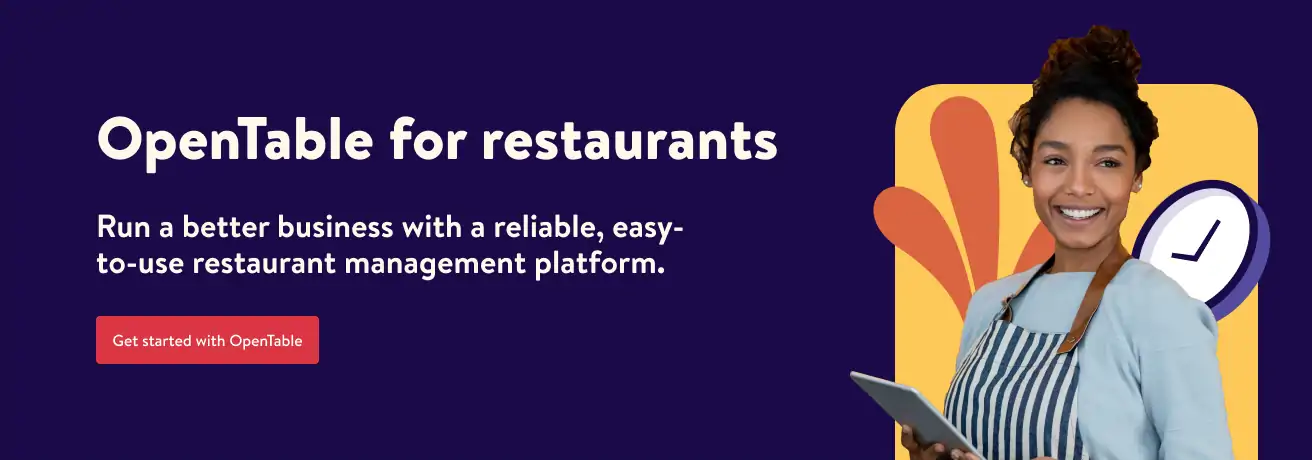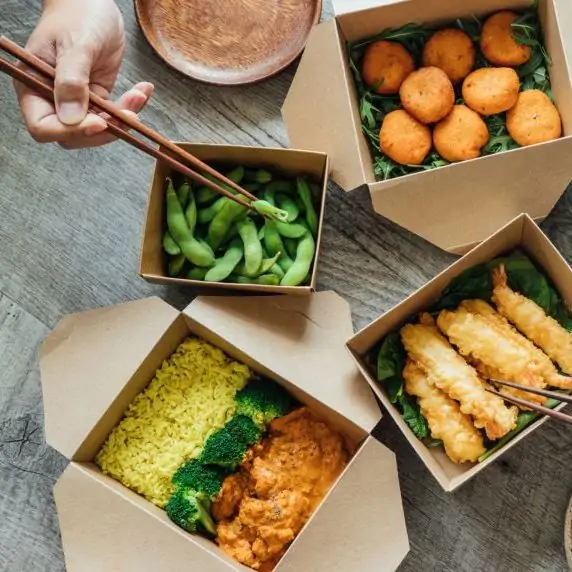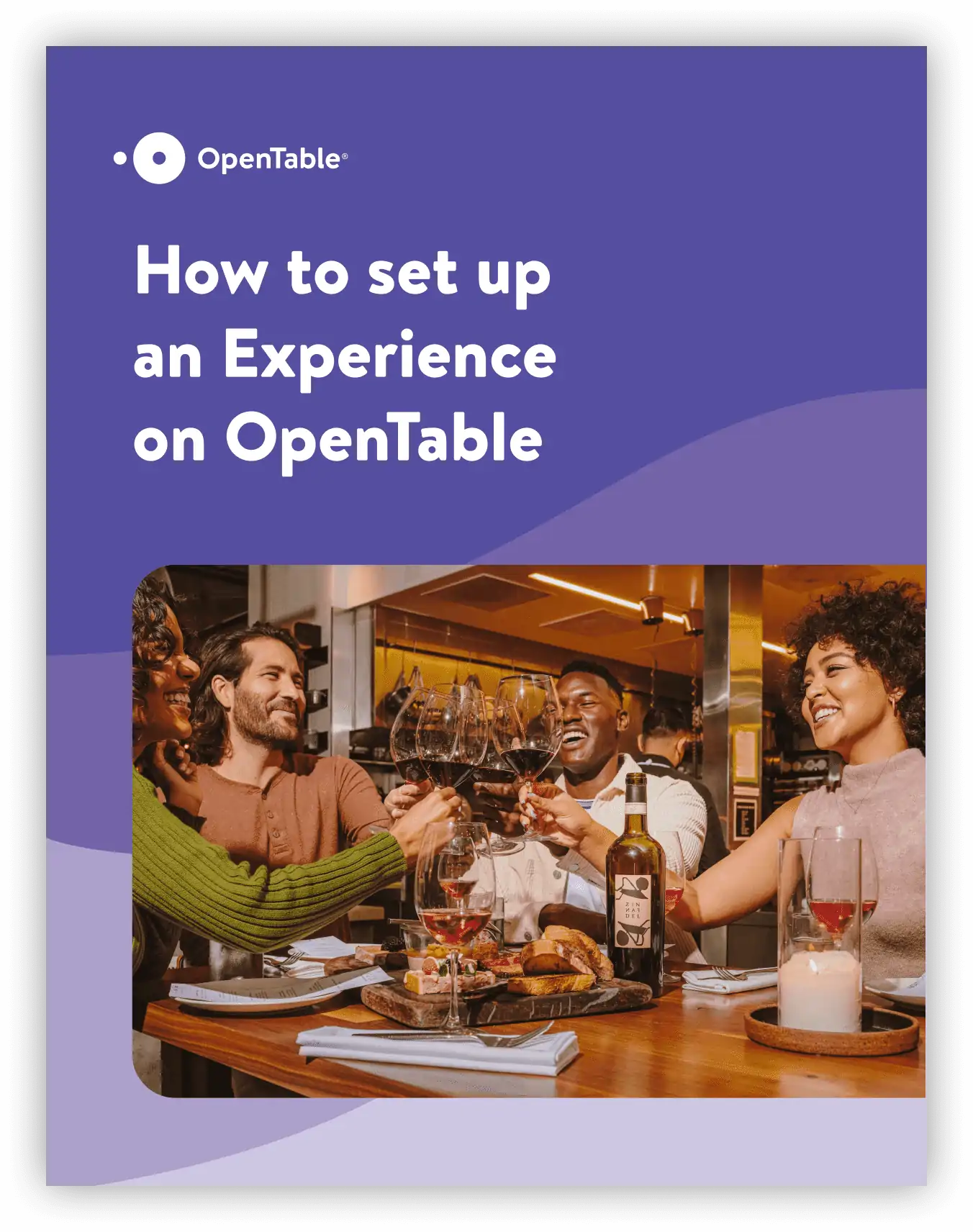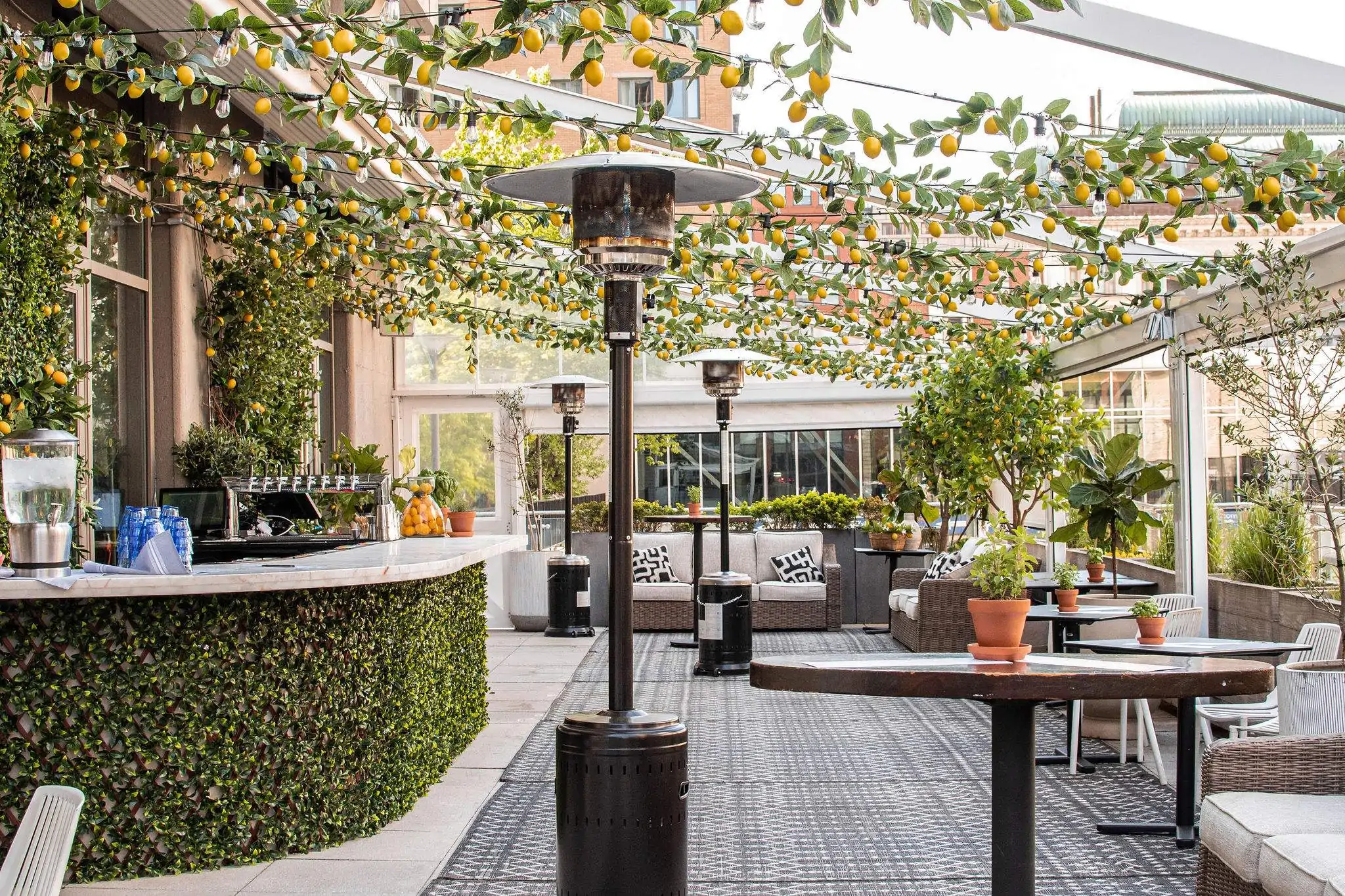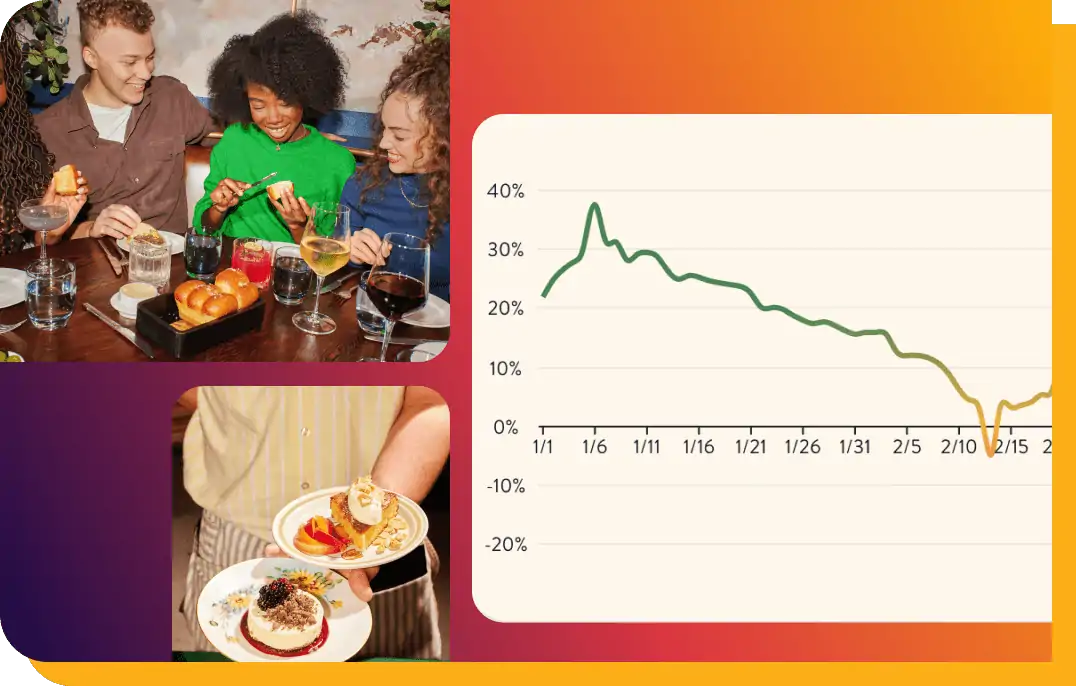In the past few years, operators across the country adapted their menus for takeout and delivery so they could continue to keep the lights on and serve their communities. Get tips and examples from restaurants that have modified their standard menu and process to meet new needs, plus best practices from the delivery experts at Postmates and Caviar.
Edit your menu to travel
Look at your current menu and see which items will be most conducive to being packed and transported. If necessary, add new ones that fit the bill.
“We limited our menus to only things that travel well–both entirely new dishes using ingredients we had in-house, and packaging certain items in different ways,” says Castellucci. The delivery menu for Castellucci’s tapas restaurant The Iberian Pig offers blistered shishitos and grilled octopus from the dine-in menu, while his modern Italian spot Double Zero offers new pastas like cacio e pepe and mushroom rigatoni in addition to the classics.
“We see restaurants offering both standard and modified menus with success,” says Laura Englander, who leads strategy and business development for Caviar. “If you’re looking to modify, we recommend offering a more ‘casual’ version of the dishes you’re known for. Keep your menus smaller and focused versus trying to get everything online right away. We recommend having a good variety of healthy options, filling options, and above else, sticking to what you’re good at!”
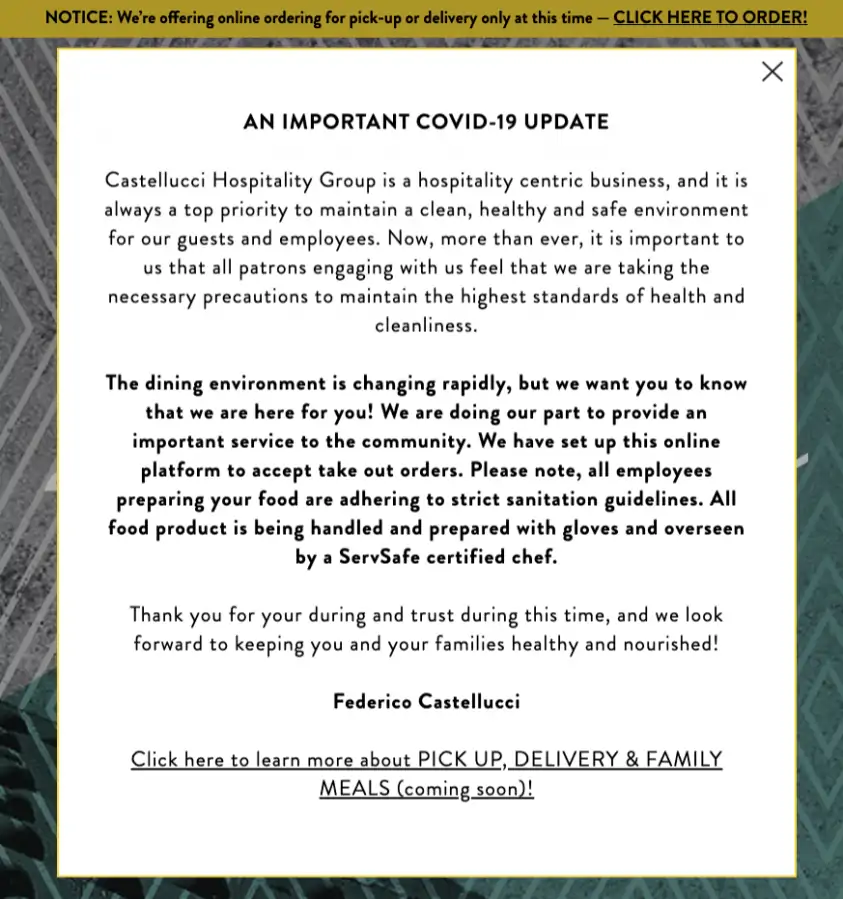
Create a special menu
Fine dining and set menu-only concepts may find that none of their dishes are suited for delivery. If you want to stay open, try something completely new. That’s what Chef Ed Lee at 610 Magnolia did, creating a special to-go menu with simple salads, proteins (think fried chicken and pot roast), and brownie desserts.
Seattle’s Canlis team took it a step further. After the acclaimed fine dining restaurant was forced to shut down its dining room, they opened three new concepts: a bagel shop, drive-thru burger spot, and family meal delivery (bottle of wine included.)
Set up delivery now
After restrictions in San Francisco and New York went into effect, Atlanta’s Castellucci Hospitality Group proactively added Uber Eats delivery for all seven of its dine-in restaurants. The timing was smart–since then, the city’s mayor has limited restaurants to takeout only. To reach the most diners, restaurants will likely want to look for a delivery provider with plenty of drivers and high demand.
Delivery services like Caviar or Seamless are great for gaining exposure to a broad customer base; plus, they have built-in delivery infrastructure and customer service. But remember: you have to pay a premium (usually around 15% of each order) for these amenities. When deciding on a delivery service, Hershell Taghap, Marketing Coordinator for Tom Douglas Restaurants in Seattle, stresses the importance of choosing one whose goals align with your own. “The delivery service should believe in the same things you believe in,” he says. “We worked with Uber because they were hard-working and in tune with social media. You have to find those people and the companies that expect the same values.”
Taghap says that delivery has helped the restaurants reach the individuals that live beyond the central Seattle area, where his places are located, and show those people that they can get delivery food that’s “as hot and delicious as they would get at the restaurant itself.” Ray Park, vice president of the Barn Joo restaurant group in New York, says that delivery has been especially helpful for Barn Joo, as the “storefront is very narrow. Not many people recognized it when it was a new restaurant. Delivery was the best way for us to get exposure, especially to local people.”
Control quality
Toby Franklin, COO of Ford Fry’s Rocket Farm Restaurants, made only minimal changes to the menus at the group’s Tex Mex concepts, but other restaurants required more adaptation for safe transport. “Our quality of product is tantamount, and we want to make absolutely sure that once we trigger to-go and delivery that the product ordered is nothing short of delicious upon arrival or pickup.”
Writing about delivery for OpenTable, reporter Priya Krishna learned that salads and sandwiches tend to sell and travel well, and they are easily recognizable to a wide range of diners. Skip items sensitive to temperature changes, or any that need to be plated to truly shine. If you’re serving ramen or pho, for example, deliver noodles and broth in separate containers with instructions for reheating.
Create family meals
On your delivery menu, make it clear how many people each dish will serve. Castellucci’s restaurant teams created new dishes specifically to feed families of two to four. In response to COVID-19 restrictions, Boston’s fine-dining spot Talulla launched “Casseroles for a Cause,” allowing diners to order frozen soups or baked pastas. (Bonus: for each purchase, the restaurant donates bagged lunches to families in need.)
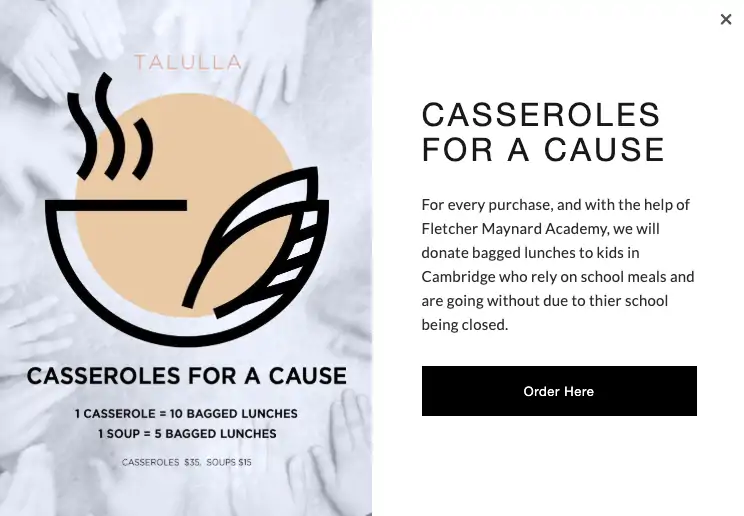
Sell takeout meals directly on OpenTable
If you’re offering a takeout menu (including prix fixe menus, meal kits, and family-style items), you can make it easy for people to bring your restaurant home with takeout directly on OpenTable. Plan in advance by choosing to accept scheduled orders, easily mark items as unavailable, and upsell with add-ons and modifiers. And takeout orders flow directly into OpenTable, making it easy to see guest information and manage takeout alongside reservations.
“We’re looking for any and all ways to get the word out about our new takeout offerings – the boxed meals have been a real hit!” says Thomas Nguyen, Chief Marketing Officer for Peli Peli Hospitality Group in Houston.
Not only does offering takeout on OpenTable allow you to drive more orders, but it can also help you respect social distancing guidelines and keep your community safe–just set a capacity limit based on how many orders you allow for pickup at a given time.
“Takeout allows us to serve our guests outside of the dining room,” says Shari Holcomb, manager at Blue Ridge Grill in Atlanta, GA. “The added revenue has been an integral part to our business that we plan to continue even when we are back at full capacity for reservations.”

Make it affordable
Englander advises keeping dishes as affordable as possible–$50 entrees are a tough sell for delivery, she notes. An upscale city menu’s $24 pasta may not translate to delivery, where customers expect more options around $14 or even $8. Many restaurants are offering 10% discounts on delivery items, compared to the same dine-in dishes, to find a friendlier price point.
Offer pantry staples and meal kits
Seeing a need for pantry staples in Los Angeles, Tesse converted its cafe and bakery into Tesse Market and Cafe, a full-service grocery, selling toilet paper and napkins, dairy products, produce, meat, pastas, house-baked bread, bottled water, and wine.
“The farms and purveyors we buy from are not the same people supplying the chain grocery stores,” the team posted on Instagram. “With the shutdown of all dine-in restaurants for the next couple of weeks, it is important that we as a community find a way to keep the economic cycle flowing and ensure that these businesses will still be up and running when we come out on the other side.”
In San Francisco, the live-fire restaurant Prairie assembled pantry boxes and ready-to-reheat meal kits for pickup, with a roll of toilet paper and bleach wipes inside each one. This week’s menu included spring chicories in a buttermilk dressing, a confit duck leg with mushroom gravy, pappardelle, burrata, and a slice of salted maple cake to share. Plus, all items are refrigerator-stable for up to five days.
They have also turned their restaurant into a general store during the citywide lockdown, offering canned seafood, dried pastas, soups, meats, and more. Customers can order groceries and supplies online, reducing the need for in-person contact.
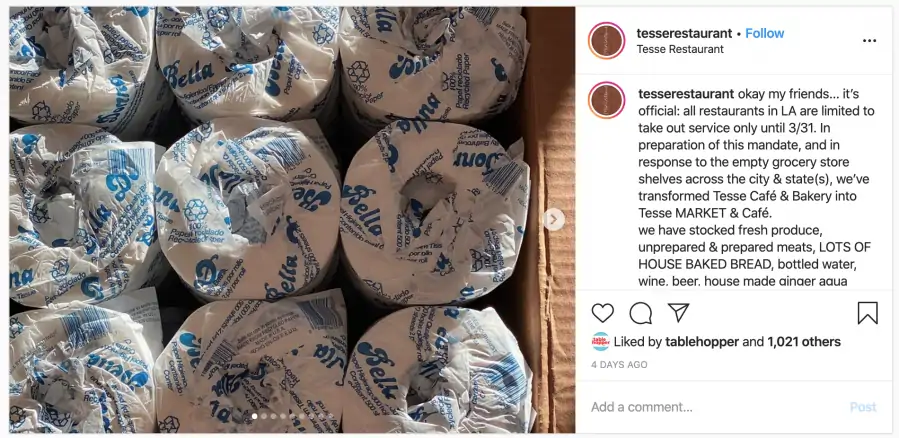
Involve your staff
“Our number one goal is keeping our staff employed for as long as possible,” says Castellucci. He’s putting managers to work in line-level positions so he can keep paying them a wage.
Similarly, Canlis’ new casual solutions are keeping their staff of career servers and wine experts working, even if the work has changed. Whether it’s helping manage delivery orders, facilitating takeout, or otherwise shifting responsibilities, do what you can to take care of your staff.
Reduce person-to-person interaction
Consider collecting payment before pickup or delivery to eliminate physical interaction between staff and diners. Many POS integrations allow you to set up an online menu where diners can order and pay ahead of time. Pre-payments guarantee the payment and eliminate the need for staff and diners to touch a credit card.
Another great option to reduce physical interaction is curbside pickup.
Get the word out
Post a link to your delivery profile page on your social media channels, and email your guest database to let them know they can order from you. Castellucci’s team plans to target people who may be working from home in the neighborhoods around his restaurants, both digitally and in person. OpenTable restaurants can use our guest frequency report to find a list of everyone who visited during this time period last year. Email the group directly and invite them to order delivery or takeout.
If you operate in an area affected by government-mandated closures, Englander recommends the following messaging: “Based on guidance from local officials, we are closing our dining room for the safety of our workers, our customers and our community, but are offering pickup and delivery through @caviar. Full details on how to request a contactless delivery option can be found in the link in our bio.”
To promote restaurants offering delivery and takeout options, OpenTable works with partners to highlight those restaurants for diners. OpenTable also surfaces takeout and delivery options on restaurant profiles so restaurants can keep revenue streams open even when reservations aren’t available. Showcase your delivery and takeout offerings by updating your profile. If you work with one of our partners and your delivery links are not appearing, email addonproducts@opentable.com.
Finally, leverage promotional opportunities that delivery companies provide. Postmates launched a $50 million relief fund to cut fees and offer free marketing services to grow merchant business over the next few months, and it’s always free to market promotions on the platform.
